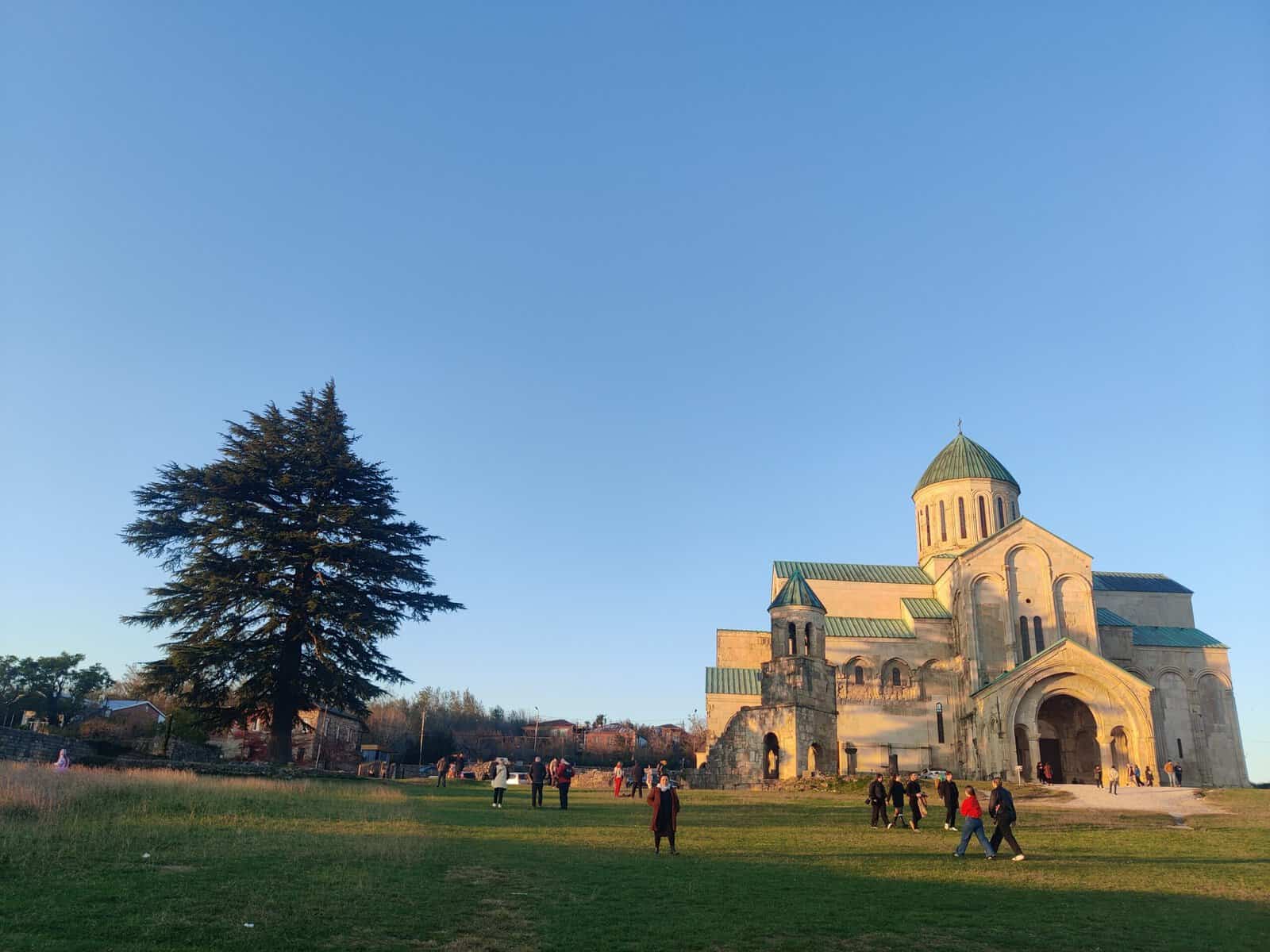11 Unmissable Things to do in Kutaisi, Georgia
Disclaimer: This post may contain affiliate links, which means I may earn a small commission if you make a purchase at no additional cost to you. I only recommend products and services that I would use myself and all opinions expressed here are my own. You can read my full privacy policy here.
Kutaisi, Georgia’s ancient capital is the underrated yet unequivocally charming city I recommend visiting. If you’re looking for a Georgian city with fun things to do – consider Kutaisi with its cool architecture, impressive churches, authentic eateries, and chill vibes.
Traveling to Georgia for the first time, I booked my flights into Tbilisi and out of Kutaisi, without really researching or knowing anything about Kutaisi. Nonetheless, after a day here, I knew I had made the right decision to visit, having had absolutely amazing time! Read below to find out why Kutaisi is worth visiting and 11 best things to do here.
Is Kutaisi Worth Visiting?
Absolutely! Kutaisi has the perfect blend of history, nature and culture. From cool medieval architecture, to bustling Georgian markets and charming, local eateries. It has much to offer but often flies under the radar when it comes to places to visit in Georgia. As a result it a lot less touristy and undeniably cheaper than Tbilisi.
For more on culture, food and hidden gems in Tbilisi, check out my separate Tbilisi Itinerary guide.
11 Best Things to do in Kutaisi
Here are 11 of the best things to do in Kutaisi, based on my time exploring the city.
1. Admire the Bagrati Cathedral
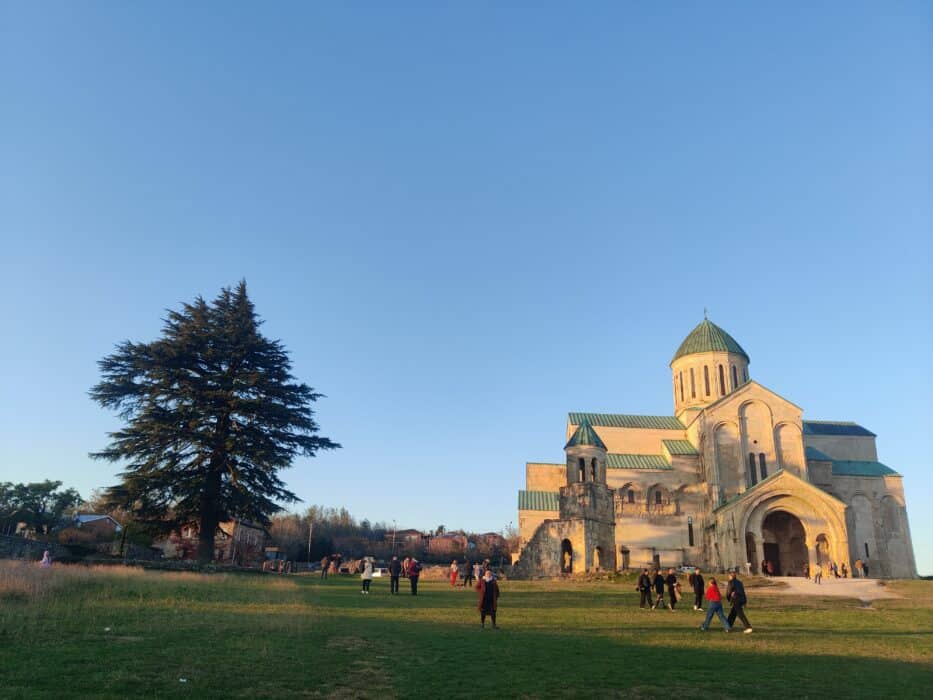
The Bagrati Cathedral is Kutaisi’s most iconic site. It is an 11th century Cathedral in the Imereti region of Georgia and is recognised as a UNESCO World Heritage Site. It is located north of the central Kutaisi town and can be accessed by taxi or a walk up the hill after crossing the Rioni river.
The Cathedral has undergone recent renovation and is worth a wander. However the highlight for me was the surrounding area and views around the Cathedral.
The Cathedral is perched high on Ukimerioni Hill, and as such views from the surrounding area offers some stunning panoramic views of Kutaisi and the surrounding hills. I visited this place just before sunset and highly recommend coming at this time to capture the golden light and excellent views over Kutaisi. There are several paths around the hill leading to quiet viewpoints that most visitors overlook if they just go right to the cathedral. At sunset you will often find locals and tourists parked by the edges of the viewpoints with a little picnic enjoy the sun down.
Entry is free, and if you’re planning to stay a while, bring some snacks or a picnic to enjoy the views.
2. Explore Street Art and Stroll the White Bridge
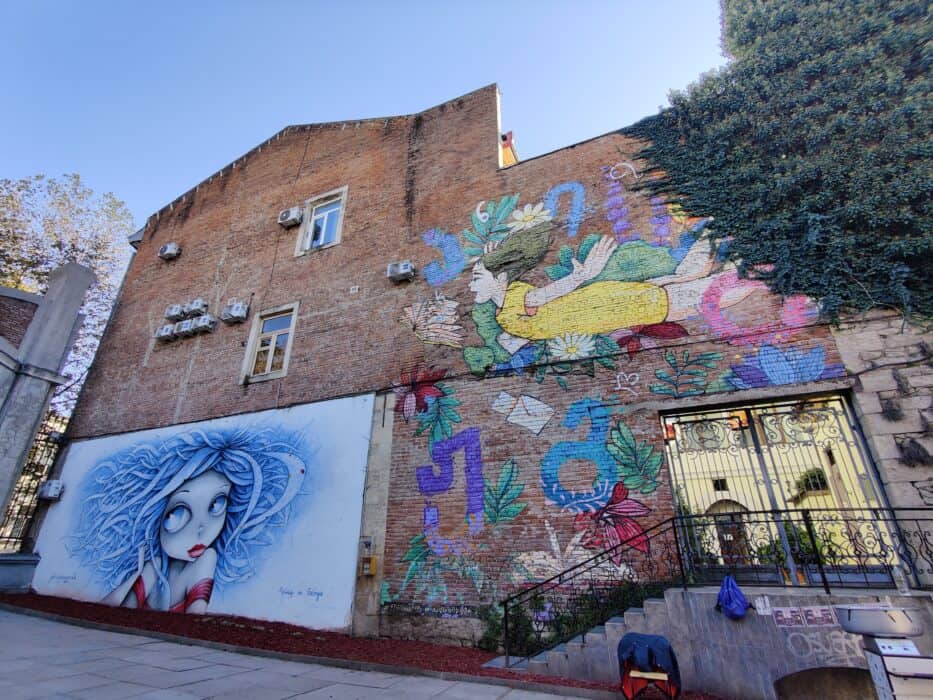
Unlike in Tbilisi, Kutaisi’s street art isn’t widely publicized, and honestly it is a hidden gem. As I wandered near the Green Market and toward the White Bridge, I stumbled upon vibrant murals and quirky cool graffiti tucked into alleys and unexpected places. There are people around, but it still feels more like uncovering a secret layer of the city.
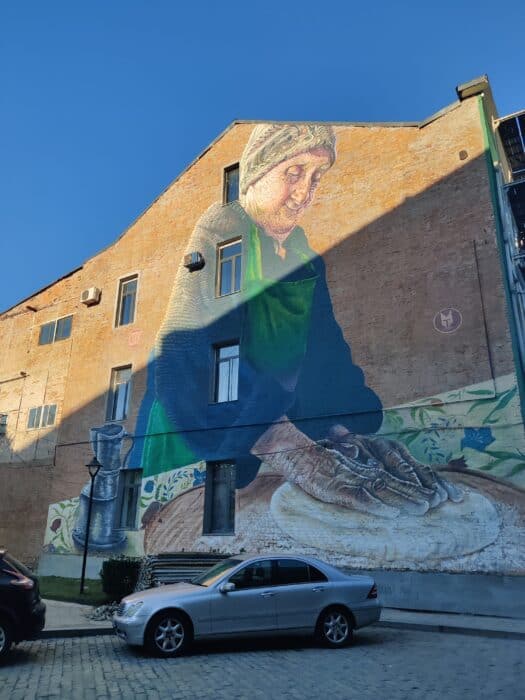
Nearby, the White Bridge, with its glass panels and views over the Rioni River, is a great spot to pause and grab a coffee from a nearby café and do some people watching.
3. Immerse Yourself in the Green Market
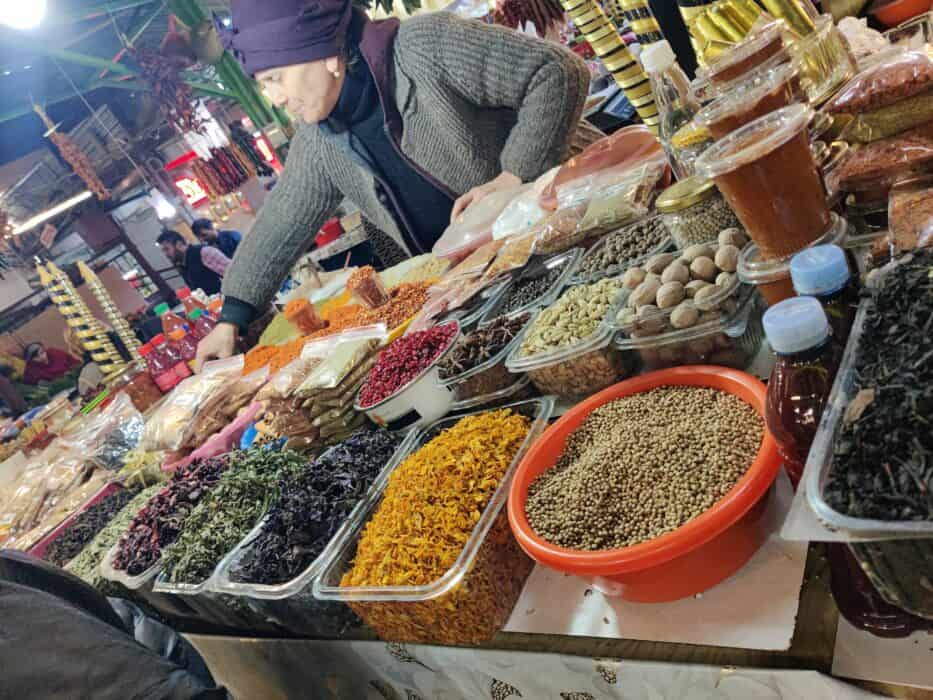
The Green Market is where Kutaisi comes alive, I had hear a few blogs mention this place and knew I had to check it out for myself. Walking through the stalls, the place is alive with colors and smells—fresh herbs, bright fruits, and the sweet aroma of churchkhela (candied nuts). The ladies running the stalls love giving giving out samples of their goods. As a self proclaimed tea connoisseur, I loved walking past the tea aisle, the colour and smells of the varieties of teas was really something.
Vendors were happy to chat, and I even got a few free samples of cheese. For less than 10 GEL ($4 USD), I picked up a bag of local treats, including honey and homemade spices. I would recommend going in the morning when it’s at its liveliest so you can take your time to explore and soak in the atmosphere the market.
4. Sip on Georgian Wine at a Local Bar
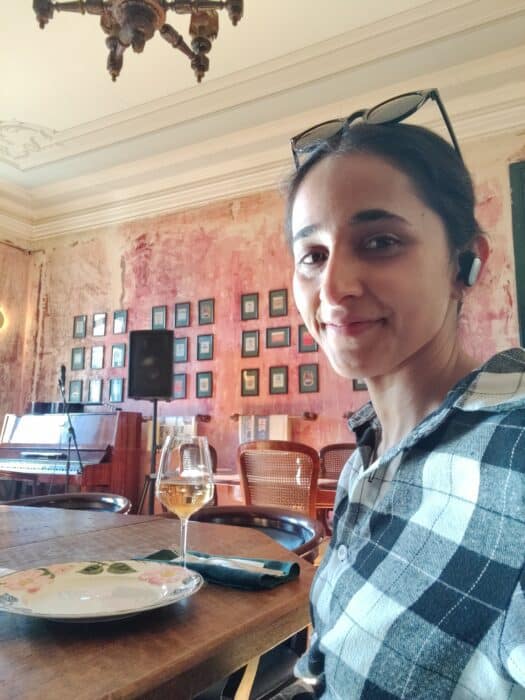
You can’t leave Kutaisi or Georgia for that matter without tasting local Georgian wine—it’s part of the culture and deeply intertwined with Georgia’s history as the birthplace of wine.
After packed day of sightseeing, I decided to head to a locally recommended place – Sapere Wine Bar. Not only is this place a great wine bar, they also do great authentic Georgian dishes.
The staff explained the ancient qvevri wine-making process and paired the wines with local food pairings, recommending the phkali (traditional Georgian dish of minced vegetables, bound together in a walnut sauce, served as an appetiser) – a 10/10!
For around 15–30 GEL ($6–12 USD), you can enjoy an intimate wine session at most wine bars.
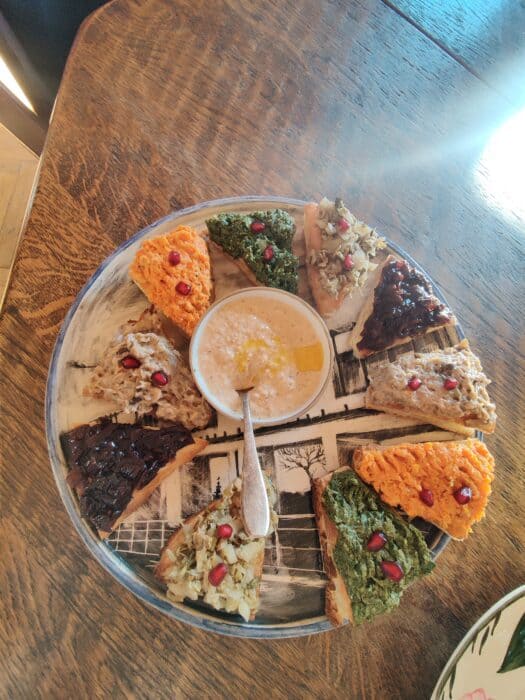
5. Visit historic Soviet era monuments
The sculptures in teh Soviet Sculpture complex and surrounding area here worth visit showcasing remnants of George’s past and present.These are next to the Kutaisi park, a short walk from the Green Market.
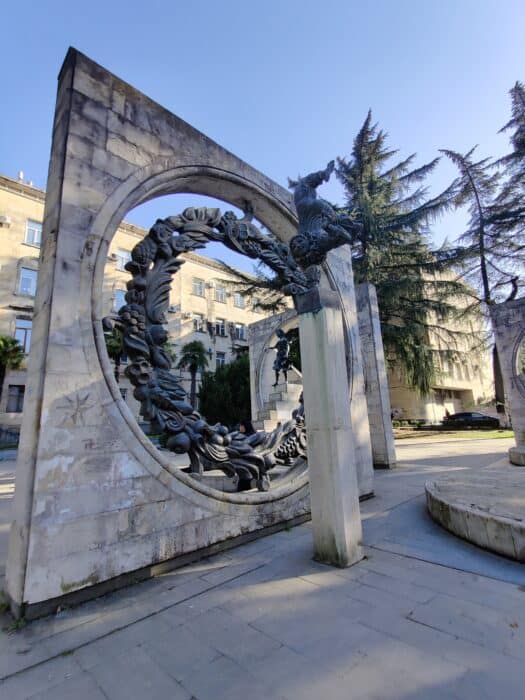
In 2009 the Georgian government decided to demolish some of the Soviet memorials as part of a broader effort to remove symbols of Soviet role and re-frame the nations identity.
As such lot of older monument no longer exist, however sites have been repurposed show Georgia’s post-soviet identity, revealing tensions between preserving historical memory and reshaping its current identity.
6. Visit the Prometheus Caves
The Prometheus caves are part of Greek legends, named after the Greek myth of Prometheus who was in fact chained to a rock in the caucasus mountains after teaching humans the secrets if the Gods.
The caves are vaste natural formation of limestone caves consisting of 22 halls, with about 6 actually open for tourists to see.
There are tours and boat rides offered to visit the caves, however you can just as easily do a self guided walk through them.
Entrance costs are 23 GEL and include a tour guide and Boat tours cost an additional 11.50 GEL. Tickets can be bought online in advance here.
Although I love caves and cave city / landscapes (absolutely loved visited the Georgian cave city of Vardzia), honestly speaking, I’m not a huge fan of caves where they light up the place with large colourful lights such as they do here. For me it sort of takes away from the natural beauty of it and feels more like a commercial tourist excursion. Nonetheless, this places proves popular amongst a lot of visitors to Kutaisi.
7. Be Inspired by Gelati Monastery
The Gelati monastery is considered one of the first monasteries in Georgia and hence one of the oldest, being founded in 1106 during the Golden age of medieval Georgia. The monastery is part of a larger medieval couples located northeast of Kutaisi. The Gelati Monastery with its intricate frescoes inside the church are a marvel and showcase the medieval artiestary of the time in Georgia.Today it is recognised as a UNESCO World Heritage site.
Visiting mid-morning, when sunlight floods the interior. The monastery is free to enter, and I recommend combining it with a stop at the nearby Motsameta Monastery, which offers stunning views over a gorge.
8. Dine at Magnolia Restaurant
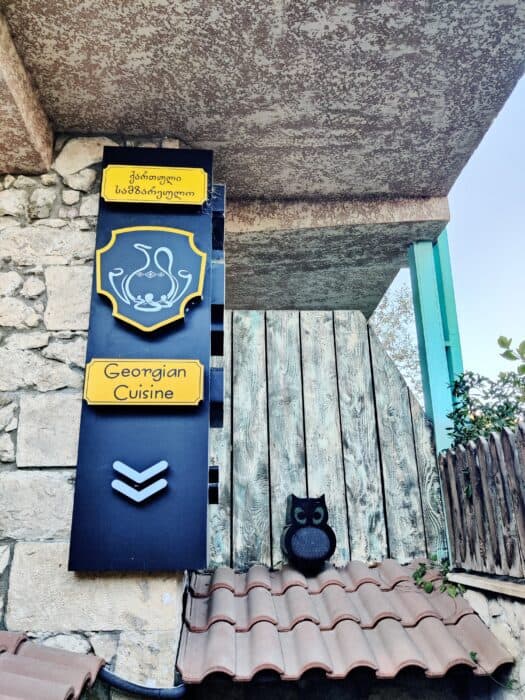
If you’re looking for an authentic Georgian cuisine in Kutaisi then Magnolia Restaurant is the place to go. Its hard to miss this place given its location right by the river banks as you head across the river central Kutaisi.
This place is famous for its cozy ambiance and excellent Georgian cuisine, I tried the Chashushuli (Heart spiced mushroom stew) which were rich in flavor. For dessert, the homemade honey cake is a must-try.
This place is super popular and busy around the clock, so consider booking if you are going during meal times in the popular season.
A meal costs around 25–40 GEL ($10–16 USD) per person.
9. Brave the Heights at Okatse Canyon
The Okatse canyon is located about 50 km outside of Kutaisi and considered a popular day trip from Kutaisi.The Canyon is can be viewed from the walkway and viewing platform which is suspended over the gorge, offering stunning views over lush greenery and waterfalls surrounding the canyon. The walkway is can freak people out, given its suspension over such a deep gorge, however the views are worth it!
Entry costs 17 GEL ($7 USD), and sturdy shoes are a must, as some paths can be uneven.The Kinchkha Waterfall nearby and also worth checking out, since you will already be in the area.
10. Unwind at the Kutaisi Botanical Gardens
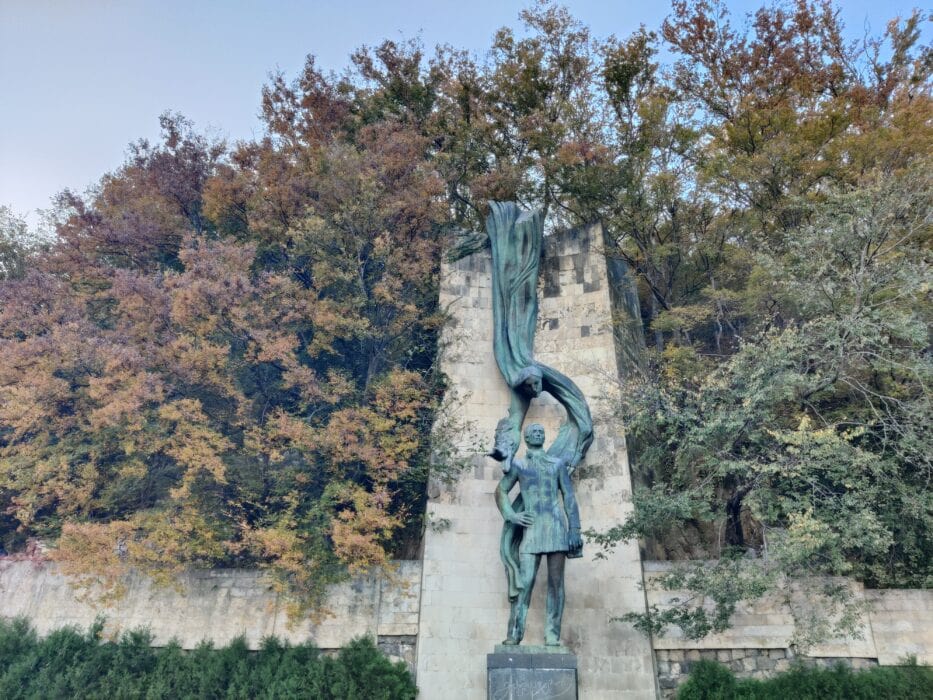
Kutaisi Botanical Gardens are the third largest botanical gardens in Georgia, with one of the largest collection of different plant. Located a good walk away from the city centre along the river Rioni, it is a serene escape. This place is perfect for if you’re looking to wander surrounded by exotic plants and flowers. Price of entrance ist 2 GEL ($0.80 USD). I recommend bringing a book or some snacks if you fancy a little picnic here.
11. Ride the Kutaisi Cable Car
Although not as iconic as Tbilisi’s cable car, Kutaisi has its own set of cable cars that provide scenic rides over the city. The White Bridge Cable Car, located near the iconic White Bridge, connects the city center to Rustaveli Hill. The cable car ride provides panoramic views of the Rioni River and the surrounding urban landscape. Similarly, the Kutaisi Park Cable Car provides a ride to Gora Park. Thai is recreational area with beautiful city views and attractions, popular with locals.
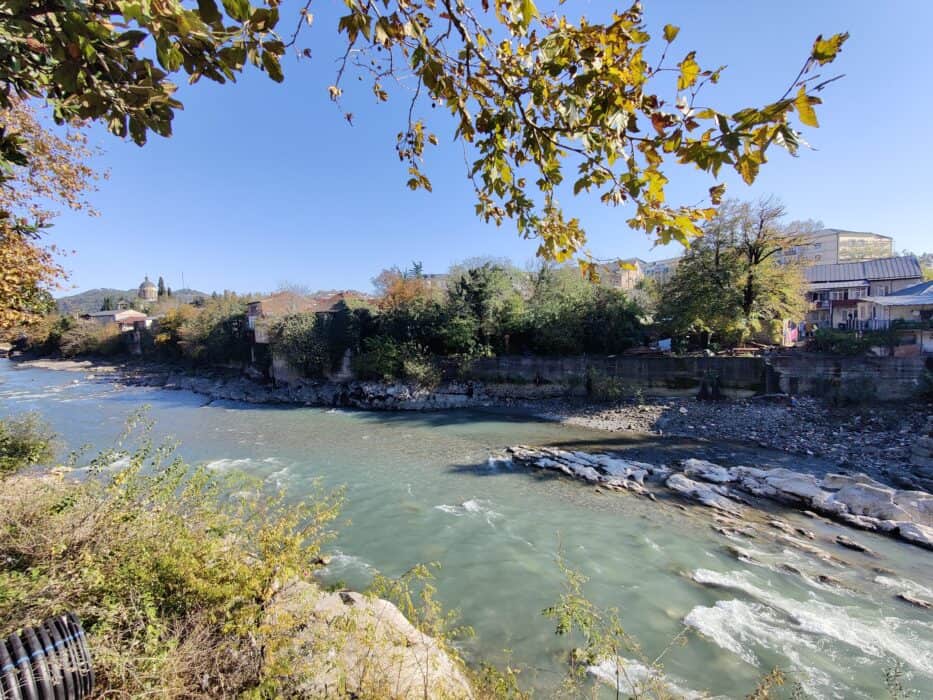
Ticket prices typically around 2–5 GEL (approximately $0.70–$1.70 USD).
I personally didn’t cover the cable cars in Kutaisi, having done the Tbilisi Cable Car (an absolute highlight in Tbilisi for me!) just days before.
Bonus reason to visit – Kutaisi’s historic roots
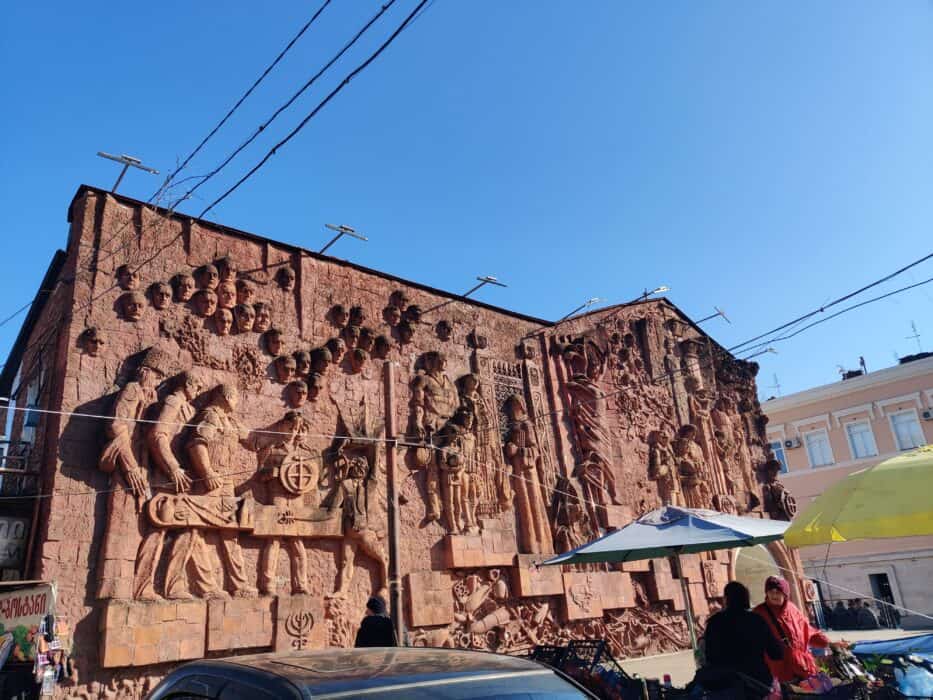
With a history spanning over 4,000 years, Kutaisi is interestingly one of the oldest continuously inhabited cities on Earth. Its long history includes its time as the capital of Colchis and later as a key center during the Kingdom of Georgia.
Kutaisi is famously linked to the legend of Jason and the Argonauts, as the ancient capital of Colchis, the mythical kingdom where the Golden Fleece was kept. This legend may have some roots in a local practice where gold was sifted from riverbeds using sheep’s wool.
So, is Kutaisi worth visiting?
Absolutely, it is worth a visit! Providing the perfect blend of attractions, culture and Georgian charm!
So if you’re visiting Georgia, make sure to add Kutaisi to your itinerary! Read below on all the practical matters you need to know for visiting Kutaisi.
Where Is Kutaisi in Georgia?
Unlike the eastern parts of Georgia, which is famous for the Kakheti wine region and Sighnaghi (the ‘City of Love’), Kutaisi is located in the western region of Georgia, about 230 km west of Tbilisi (for more on culture, food and hidden gems in Tbilisi, check out my Tbilisi Itinerary guide.
The city is situated along the banks of the Rioni River, surrounded by beautiful green hills and the majestic Caucasus Mountains beyond. It became more accessible internationally with Kutaisi international Airport opening in 2012, which has become a major hub for budget European airlines such as Wizz air.
How do you get to Kutaisi?
Flying to Kutaisi
Kutaisi International Airport is a hub for budget airlines, especially Wizz Air, so if you’re coming from Europe, you’re in luck. Here’s what you can expect if you’re flying from the UK or the US:
- From the United Kingdom:
I found round-trip flights from London for as little as $105 USD (275 GEL). Budget airlines make this route super affordable, and the flight itself is quick and hassle-free. - From the United States:
Flights from New York typically start at $566 USD (1,500 GEL). While you might not find direct flights to Kutaisi, you can fly into Tbilisi International Airport then make your way here, via bus or train.
Traveling from Tbilisi to Kutaisi
If like most people, you are flying into Tbilisi before visiting Kutaisi, then you have several options for getting here.
- By Train:
Tickets cost just $5–$10 USD (13–26 GEL). The ride on the Georgian railway is scenic and relaxing, taking about 5 hours. If you’re not in a rush (as these can be slow), this is a great way to enjoy the countryside. - By Minibus (Marshrutka):
A Marshutka is a great budget option at just $9 USD (24 GEL) for a 4-hour journey from the Tbilisi bus station. These minibuses are everywhere and leave frequently, so you won’t have to wait long. However these mostly only depart once full, so don’t necessarily expect a prompt departure once you have boarded. - By Private Car or Taxi:
If you want speed and comfort, a private taxi is a great option. It costs around $70–$90 USD (182–234 GEL), and you’ll get to Kutaisi in about 3 hours. This is perfect if you’re traveling with a group or have lots of luggage. If you’re looking to book a private car transfer, I highly recommend GoTrip. Although I traveled to Kutaisi by train, I primarily used GoTrip throughout my week in Georgia, using it to travel from Tbilisi to surrounding areas such as Caucasus mountains, Kakheti wine region and the ancient cave city of Vardzia. GoTrip offers the flexibility to customize your trip with unlimited stops along the way. There are both English and Russian speaking drives available. The website is straightforward and easy to book from and can be booked quite last minute.
Driving to Kutaisi
Renting a car is another great option to getting around Georgia, however my main caveat is that drives in Georgia don’t generally tend to follow the rules so I would only recommend this option if you feel super comfortable driving here.
If you do choose to drive, then Kutaisi is a straightforward 3.5-hour drive from Tbilisi along the E60 highway. Rental cars are affordable, starting at around $30–$50 USD (78–130 GEL) per day.
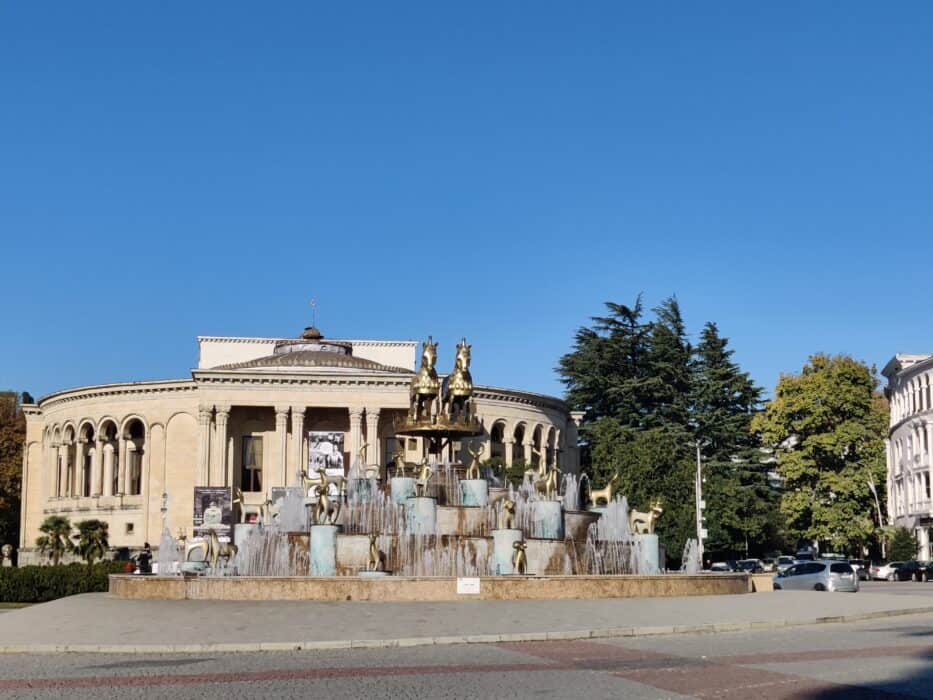
How to Get Around Kutaisi
- Walk – Kutaisi is a greatly walkable city, I was not staying all that close to the city center and even then I still found Kutaisi to be one of the most walkable place. Most attractions, like the Colchis Fountain and White Bridge, just a short walk from each other. I would say walking is honestly the best way to soak up the local vibe.
- Take a Taxi – If you’re short on time or heading further out, taxis are cheap and convenient. I paid around $2–$4 USD (5–10 GEL) for most rides within the city. Just be sure to agree on the price before you hop in!
- Hop on a Marshrutka – These shared minibuses are perfect for budget trips to spots like Gelati Monastery or Prometheus Cave. Fares are usually $1–$3 USD (2.5–8 GEL), and they run pretty frequently. However, the main con with Marshrutkas is they usually leave when they’re full adn hence timing can be a bit unpredictable, so its best to give yourself some buffer time if you’re on a tight schedule.
Best time of year to visit Kutaisi?
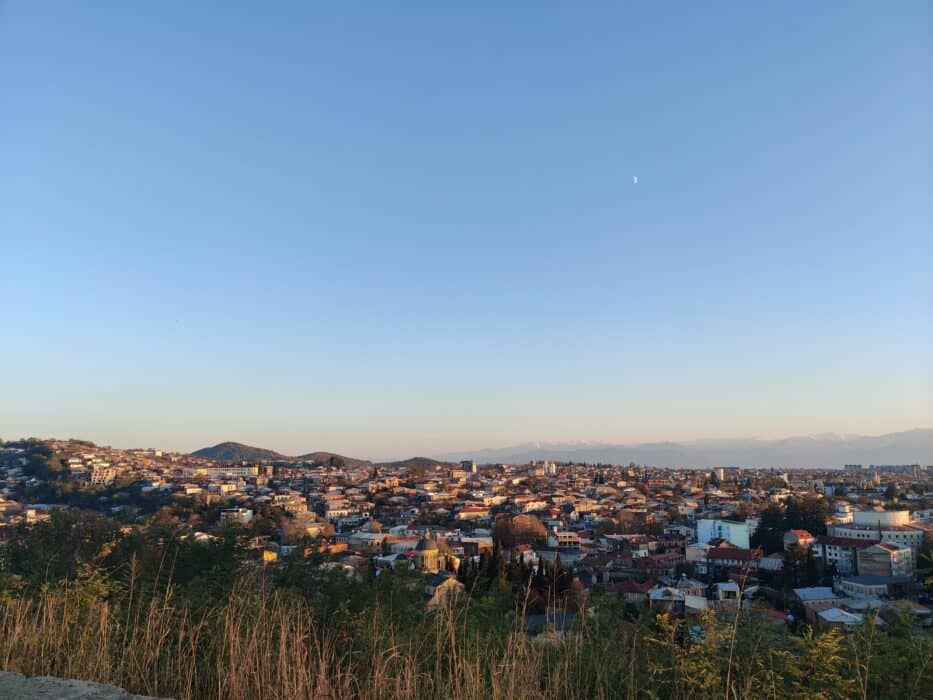
Anytime of year is great, nonetheless, the best time to visit Kutaisi depends on what you’re looking for –
- Spring (March–May) is mild and pleasant, with spring bloom and temperatures between 50–70°F (10–21°C), this is perfect for sightseeing and nature walks.
- Summer (June–August) is warm and lively, averaging 70–86°F (21–30°C), ideal for outdoor adventures like exploring the nearby canyons and caves.
- Autumn (September–November): is cool and colorful, with temperatures from 50–77°F (10–25°C) and beautiful fall foliage.
- Winter (December–February): is quiet and cool, averaging 37–50°F (3–10°C), great if you don’t mind the cold for a peaceful, crowd-free experience.
I personally went in late autumn, and although it was a lot cooler, it was nice not having too many other tourists around and being able to book stuff last minute.
How long to spend in Kutaisi?
I’d recommend spending at least two days in Kutaisi to cover all the highlights of things to see and do here. Two days will give you enough time to explore the city’s highlights and get a taste of its charm,
This duration allows you to explore the city’s main attractions and take day trips to nearby sites. For instance, dedicating two days lets you visit local highlights such as Bagrati Cathedral and the Green Market, while a third day provides the opportunity to explore surrounding areas like Tskaltubo or Martvili Canyon.
If you’re short on time, even a full day is enough to see all the highlights – which is what I did. However for a more relaxed pace, 2 days is ideal.
Where to Stay in Kutaisi?
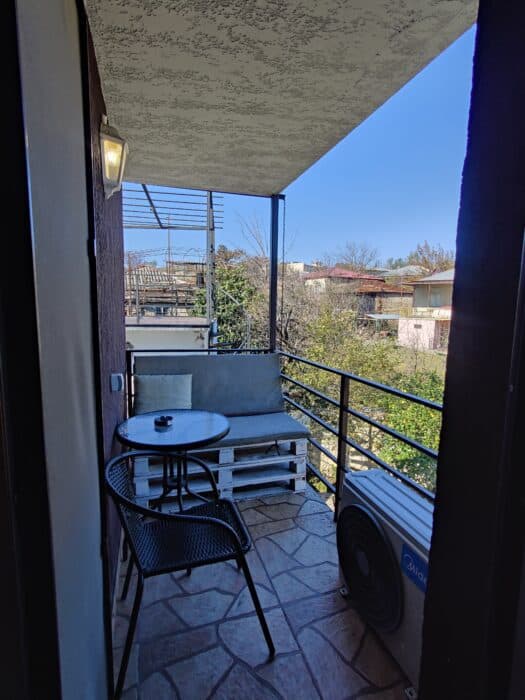
There are plenty of convenient and charming areas to base yourself. Consider the following when booking –
- City Center: Staying in the heart of Kutaisi puts you within walking distance of attractions like the Colchis Fountain, the Opera House, and vibrant local markets. This area is perfect for travelers who want easy access to restaurants, shops, and the city’s main sights.
- Near the White Bridge: This picturesque area, is perfect if you want scenic views and a peaceful atmosphere while still being close to the action. In fact being here you will be in between the main city center and the Bagrati Cathedral, so overall a great spot location wise.
- Around Bagrati Cathedral: If you’re looking for something quieter and more atmospheric, staying near Bagrati Cathedral offers stunning hilltop views of the city and a sense of history. This is where I stayed, and I would highly recommend it. Although you are a short walk away from the central attractions, from here you are at a slight elevation and are rewarded with stunning views of the city and river below.
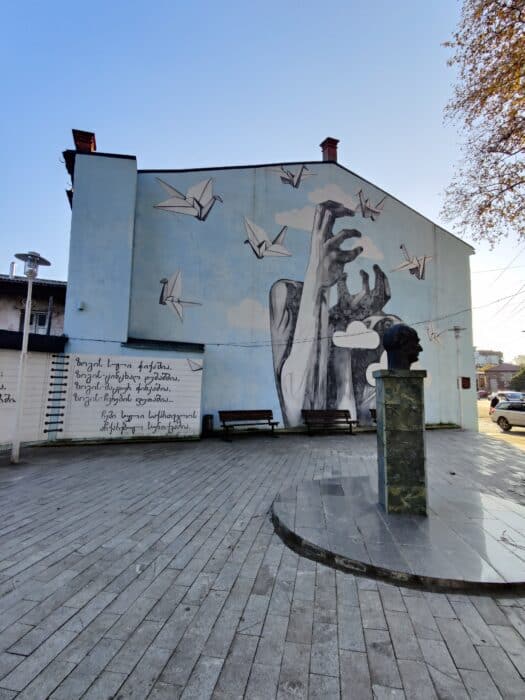
Heading to Telavi and Sighnghi? Hop over to my guides:
- Best 4 Day Tbilisi Itinerary for Culture, Food & Hidden Gems
- Where to Stay in Telavi, Georgia: 15 Best Guesthouses, Hotels & Winery Stays
- Where to Stay in Sighnaghi, Georgia: Best Hotels & Guesthouses for Wine-Tasting & Views
Are you heading to Georgia? Check out our useful guides below

